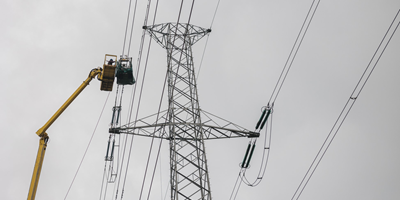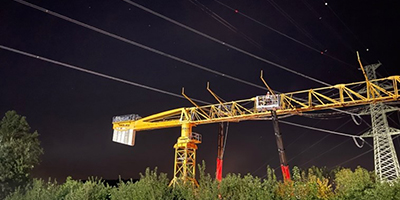Mercator-Bruegel
Reinforcement of the existing overhead line (380kV) between the Mercator and Bruegel high-voltage substations.

Reinforcing the north-south axis of the Belgian electricity
Elia plans to upgrade the existing high-voltage line (380kV) between the Mercator substation in Kruibeke and the Bruegel substation in Dilbeek. This is needed to better distribute and transmit the increase in electricity flows. As a result, the electricity supply for the entire country will be secured in the future.
-
 In the interest of society
In the interest of societyThe Mercator-Bruegel project is necessary for two reasons:
1. Reinforcing the north-south axis of the Belgian electricity grid
Elia is upgrading the north-south axis of the Belgian electricity network. This north-south axis forms part of the backbone of the electricity grid needed to transmit electricity across the country. This voltage level (380kV) allows large amounts of electricity to be transmitted quickly and efficiently.
2. Better organization and distribution of electricity flows
More and more renewable energy sources are being connected to the electricity grid across the country. This leads to an increase in internal electricity flows (fluxes) through Belgium. This project is needed to better distribute and transmit these electricity flows via the 380kV grid. -
 The routeThe existing overhead line between the Mercator high-voltage substation in Kruibeke and Bruegel in Dilbeek is approximately 32 kilometres long. The route runs from the Mercator high-voltage substation in Kruibeke, located to the south of Haasdonk Fort, via the Scheldt (Temse and Bornem) and continues south towards Buggenhout, Merchtem and Dilbeek. The overhead line crosses 3 provinces and spans 9 municipalities, namely Kruibeke, Temse, Bornem, Puurs-Sint-Amands, Buggenhout, Londerzeel, Merchtem, Asse and Dilbeek.
The routeThe existing overhead line between the Mercator high-voltage substation in Kruibeke and Bruegel in Dilbeek is approximately 32 kilometres long. The route runs from the Mercator high-voltage substation in Kruibeke, located to the south of Haasdonk Fort, via the Scheldt (Temse and Bornem) and continues south towards Buggenhout, Merchtem and Dilbeek. The overhead line crosses 3 provinces and spans 9 municipalities, namely Kruibeke, Temse, Bornem, Puurs-Sint-Amands, Buggenhout, Londerzeel, Merchtem, Asse and Dilbeek. -
 Environment
EnvironmentElia takes a number of measures to minimize the impact of the work on local residents and the environment:
- Elia restores the site to its original state once work is complete.
- Elia prefers to set up work depots in existing industrial zones or paved areas to limit disruption for the environment and nature.
- Elia promises local residents that they will always be able to access their homes
- Work is not performed during the night, so no depots or sites are lit up at that time.
- Site traffic uses the shortest, safest and most accessible routes.
- Elia uses gantries when removing or pulling cables close to railways, roads or other key infrastructure with a view to minimizing the impact on the surrounding area.
- If normal traffic has to be diverted, the diversions will be agreed with the road authority (the municipality or the Flemish Region) and clearly communicated to local residents.
-
 Schedule
Schedule- Studies: from early 2020 up to and including early 2021
- Permits: from the beginning of 2021 through to the end of 2021
- Works: from the beginning of 2022 through to the end of 2026
-
 Interactive map
Interactive mapFollow the works per pylon
Click on this map to find out where and when we are working. For each pylon, you will find the type of work, the planning and the contractor.
-
 Documents
Documents
News

07 November 2025
Final phase of the works
In August 2025, we started the final phase of the Mercator-Bruegel project. At that point, we began replacing the electrical wires on the high-voltage pylons between Buggenhout and Dilbeek. Since the beginning of November, one side of the line has been completed. In April 2026, we will continue working on the other side of the line. The entire project will be completed by September 2026.

01 August 2025
Replacement of high-voltage pylon conductors between Buggenhout and Dilbeek
As the Belgian high-voltage grid operator, we have been working on upgrading the high-voltage (380-kV) line between Kruibeke and Dilbeek since 2022. The section between Kruibeke and Buggenhout was completed in 2024. This will be followed by the section between Buggenhout and Dilbeek in 2025 and 2026, with the first phase of this part of the project running from August to November 2025. The work will be finished by the summer of 2026.

24 October 2024
The Mercator-Bruegel project enters its final phase
Contact us
If you are affected by a project and want to ask us something, please feel free to contact us.Our team would be happy to help.

